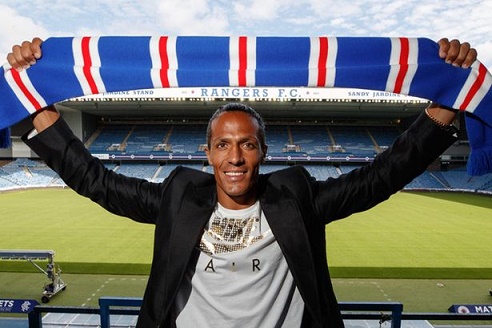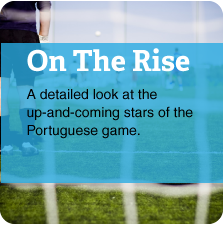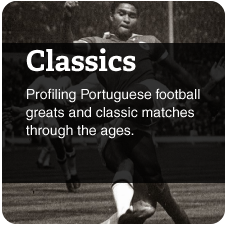 Bruno Alves headlines squad revolution
Bruno Alves headlines squad revolution
Rangers’ Manager Pedro Caixinha has been a busy man so far this close season, bringing eight new players to the club as he attempts to shape the team into an outfit which can better last season’s third-placed finish behind champions Celtic and second-placed Aberdeen.
The indications are that he’s not yet finished adding new blood to the light blues’ squad, but after eight signings, it’s worth a look at the new arrivals and surmising as to what sort of impact they are likely to have on the team’s fortunes when the big kick-off arrives.
In May I wrote that Caixinha’s entry into the transfer market in the summer was beyond crucial in order to improve a side that finished 39 points behind Celtic (scoring 50 fewer goals), and nine points behind Aberdeen. This much was obvious.
Caixinhas's contacts, new contracts
I also opined that Caixinha’s nationality and his having managed in Mexico meant that players from leagues in Portugal and Mexico may well form the majority of the new arrivals in Govan. Although this prediction, too, didn’t require any particularly esoteric insight, it proved to be correct nonetheless: of the eight signings made thus far, four are Portuguese, and two are Mexican. Of the other two, one is a Scot, and the two North American signings are joined by a South American – a Colombian.
So what has Caixinha turned up? Of the eight new signings, one name immediately leaps off the page – Bruno Alves – the Portuguese legend with 92 caps for his country and 11 goals, a significant scoring contribution for a centre-half. Caixinha signed the Porto legend from Italian Serie A side Cagliari for an undisclosed fee, rumoured to be in the region of €600,000.
Upon Alves’ signing a two-year deal, Caixinha announced his intention to “build the defence around [Alves]”. In his pomp, I think it would be fair to describe Alves as a world-class player, but he’s going to be 36 in November and I question this signing purely based on his age. Alves may currently be playing (well) in the Confederations Cup in Russia as I write this, but I’d be prepared to wager that he will not be returning to Russia for next year’s World Cup, assuming Portugal qualify.
When Arsene Wenger brought Sol Campbell to Arsenal as his defensive lynchpin, he was a decade younger than Alves is now, and Campbell’s time at the Gunners was up when he was 31. Likewise, when Alex Ferguson signed Rio Ferdinand for the same role, he departed Old Trafford 12 trophy-laden years later and he was still a few weeks younger than Alves is on his arrival at Ibrox.
The obvious point is that Alves, for all his skill, is not going to get any faster. Au contraire, in fact. So would it be too unkind to describe Alves as a world-class player in the past tense? It will certainly be fascinating to see how Alves deals with the swifter players in the SPFL. Perhaps his reading of the game and ability to marshal a defence will be enough. Anyone interested in Scottish football – and the progress of Portuguese players abroad – are going to be mighty curious to see how it pans out.
The three other Portuguese arrivals are far less storied than Alves. Another centre-half, Fábio Cardoso, arrives from Vitória Setúbal after 23 games and just one year played of a four-year deal signed with the Bomfin club. Another signing for an undisclosed fee, although a figure of c.€200,000 has circulated as the price of his services. The modest fee one-quarter of the way into his deal does beg the question why he was so easily parted from his contract? Nevertheless, aged 23, Cardoso has penned a three-year deal. One imagines that in Caixinha’s ideal world, he’s going to learn from playing alongside Alves.
Winger Daniel Candeias arrives after three years as a Benfica player, but without having played for the Lisbon side, instead spending the entirety of his tenure on loan, variously, at: 1. FC Nürnberg; (Germany); Granada (Spain); Metz (France), and Alanyaspor (Turkey). The 29-year-old joins Rangers on a two-year contract at a cost of €800,000. I’ll be honest and say I know nothing about him.
The final member of the Portuguese quartet arriving in Glasgow is forward player Dalcio, on a season-long loan from Benfica B. His 50 league games at the Seixal outfit have returned… two goals. Again, he’s a mystery to me and the entire Scottish press corps as well it would seem. That goals to games ratio doesn’t impress, but stats don’t win football games.
Mexican internationals brought on board
From Mexico, 27-year-old international midfielder (19 caps, two goals) Carlos Alberto Peña has penned a three-year deal on a free transfer from Guadalajara, and his 28-year-old compatriot Eduardo Herrera, a striker, also signed a deal of the same duration on the same day as Peña. Herrera, also an international, has three goals from his nine appearances for Mexico, but has only one cap to his name since 2015, so is not currently in the plans of national manager Juan Carlos Osorio. Herrera’s previous club UNAM banked €1.7m for the player’s Atlantic crossing.
21-year-old Colombian striker Alfredo Morelos arrives from HJK in Finland on a three-year deal at a cost of €1.15m. His scoring record in Finland is eye-catching: 62 games in two years at HJK returned 46 goals but, with respect, the Finnish league is ranked 36th by UEFA, behind Iceland, Moldova and Liechtenstein.
The octet of new boys acquired thus far is completed by a more prosaic signing, that of 25-year-old defensive midfielder Ryan Jack who also penned a three-year deal on a free from Aberdeen, having played nearly 250 games for the Dons. He’s a composed player with excellent positional sense, an unfussy style and good distribution.
So there we have it. The thick end of an outfield team arrives for a collection – Herrera apart – of relatively modest fees and frees. The highest profile acquisition, by far, is that of Alves, but – for this writer at least – his age is an issue and will obviously become more so as his two-year deal progresses. I must confess, I am absolutely fascinated to see how he will fare at Ibrox. Scottish football may not be the most technically blessed league in Europe, but it’s fast – often very fast – and Caixinha’s choice of a very classy but ageing centre-half to underpin his defence is a gamble, no doubt.
Jack aside, the new boys are quite the cosmopolitan gathering. The $64,000 question, however, is are they any good in general and are they going to excel in Scotland in particular? As July nears, at least we’re not going to have to wait long for an answer.
The eight new players brings the size of Rangers’ first-team squad to 35, and if Caixinha’s wallet is not yet closed then that number will increase unless, of course, players are shipped out. This is definitely a priority for Rangers, whose financial health (or lack of therein) is the elephant in the room. The club recently sold former Preston North End striker Joe Garner to Ipswich Town for an alleged £1m, having allegedly paid £1.8m for him some ten months previously.
The need to trim
Both of these fees are complete fantasy, and everyone knows it (including the journalists who reported the above figures) but that’s not particularly relevant at this time. What is relevant is that Garner looked to be a very poor player, and Rangers have done well to get rid of one of the highest earners at the club.
Simple income v. expenditure arithmetic tells us that Garner needs to be the first of a decent number of sub-standard players to leave Ibrox, and if there’s one thing that Rangers have a surfeit of, it’s sub-standard players. By my reckoning, Rangers can afford to maintain a first-team squad of 30 experienced professionals at the very most, so even if Caixinha’s recruitment is over for the summer, they are still going to have to lose about five players – minimum.
At the conclusion of last season, Rangers compiled and distributed widely a list of their first-team squad players who were available for the right price (not the same thing at all as transfer-listing them) and that list extended to virtually every player within the squad. Some of the numbers corresponding to the players were, frankly, delusional. Apparently they would be prepared to let defender James Tavernier go for £800,000 – four times what they paid for him.
One can only conclude that an extra zero was added to this figure in error. Tavernier’s athleticism is well above average but his reading of the game is abysmal. His positioning is equally poor, as is his distribution, and he’s not even particularly effective in the tackle. He does have a decent cross in his locker, but defenders need to be able to defend. If the Tavernier valuation is anything to go by (assuming it’s not a mistake) then Rangers need to give their collective heads a shake in terms of valuations of poor players on significant wages if they want them off the books. Tavernier is but one example; there are at least half-a-dozen other players contracted for more than 12 months at Ibrox that Rangers should be ecstatic to get rid of on free transfers.
To conclude, Rangers need to trim their squad significantly and Caixinha’s exotic new troupe needs to hit the ground running. Only then can they think of challenging Aberdeen for a runners-up spot next season. Any talk of title challenges to Celtic are unrealistic and will remain so for a number of years unless the Ibrox club can find €50m in a cupboard somewhere.
I think everyone in Scottish football shares my anticipation and excitement for the coming season. Has Caixinha unearthed gold for the price of silver? With the number of players Caixinha has already brought in, a runners-up spot is the bare minimum return required by his paymasters for the coming season. If he and his team don’t achieve that, it’s hard to see him remaining at Ibrox.
by John Hunt (Twitter: @johnhunt1892)




